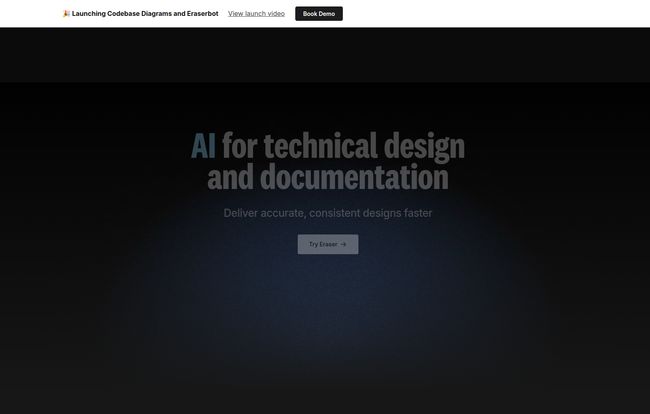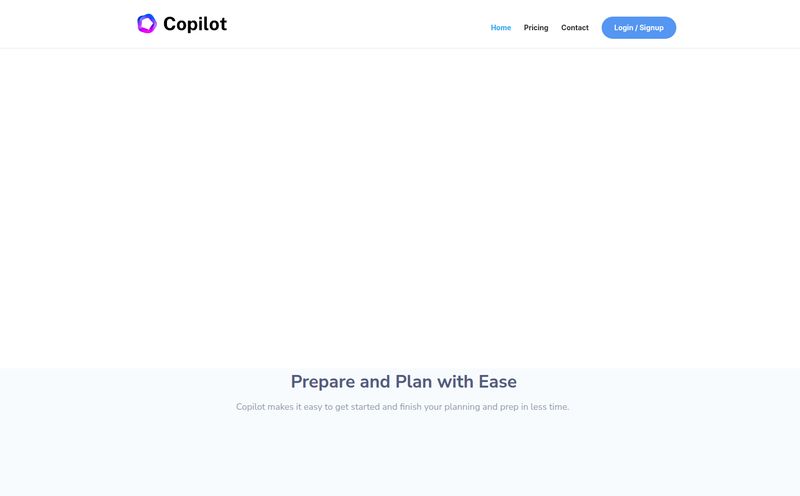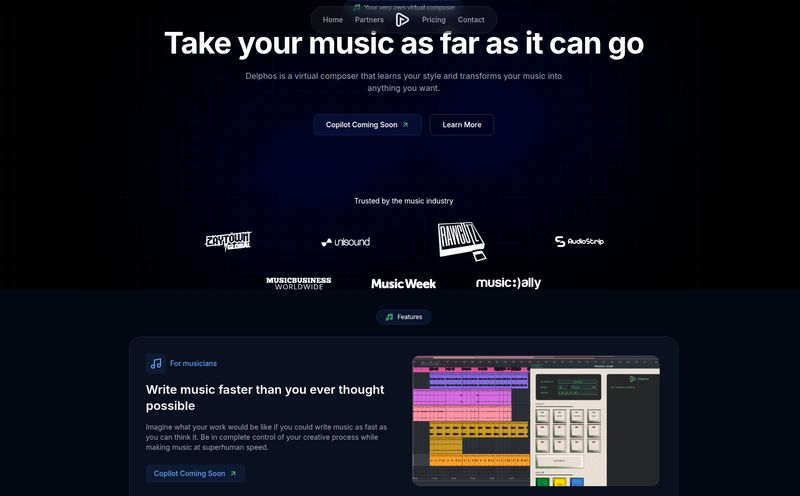If you’re a software engineer, an architect, or a DevOps pro, you’ve felt the pain. The deep, soul-crushing pain of creating, and worse, maintaining technical diagrams. You know the ones I’m talking about. That sprawling system architecture diagram lurking in a forgotten Confluence page, hopelessly out of date since the last three sprints. Or that flowchart someone made in a clunky desktop app, and now nobody can find the source file to edit it.
It’s a tale as old as time. Documentation is the broccoli of software development; we all know it’s good for us, but most of us would rather eat dessert. For years, we've been stuck between painstakingly drawing boxes and arrows by hand or just… not doing it. But what if there was another way? A way to generate clean, consistent, and version-controlled diagrams almost as fast as you can describe them?
Well, I've been playing around with a tool called Eraser, and it feels like a genuine shift in how we can approach this stuff. It calls itself an “AI co-pilot for technical design,” and honestly, that’s not far from the truth. So grab a coffee, and let's get into whether this thing is just another shiny new toy or a legitimate game-changer for your workflow.

Visit Eraser
So, What Exactly Is Eraser?
At its heart, Eraser is an AI-powered diagramming tool built for technical people. You don't drag and drop shapes in the traditional sense, though you can. Instead, its superpower is letting you create complex diagrams using natural language and markdown. Think of it as having a junior engineer at your beck and call, one who can instantly turn your whiteboard scrawls into a polished, professional diagram. It’s designed to create everything from cloud architecture diagrams (AWS, Azure, GCP) to entity-relationship diagrams (ERDs) and sequence diagrams.
But the real secret sauce, the thing that made me sit up and pay attention, is its diagram-as-code philosophy. Because the diagrams are generated from text, they can be versioned, reviewed in pull requests, and maintained right alongside your actual code. This isn’t just about making pretty pictures; it’s about making documentation a living part of the development lifecycle. For anyone who's ever been burned by a diagram that lied about the state of production, this is a pretty big deal.
The Standout Features That Genuinely Impress
I’ve seen a lot of tools come and go. Most just offer a slight improvement on an old idea. Eraser feels different. Here’s what stood out to me during my testing.
The AI Diagram Generator is a Little Bit of Magic
This is the main event. You open up a new file, type a prompt like, “Create a cloud architecture diagram for a web application with a load balancer, two web servers in an auto-scaling group, and a PostgreSQL database,” and… it just does it. It spits out a clean, properly laid out diagram. It's fast. Incredibly fast. Of course, you’ll need to refine your prompts to get exactly what you want—a skill I'm sure we're all getting used to—but the starting point it gives you saves an absurd amount of time.
Diagram-as-Code is a Developer's Dream
I can't stress this enough. Being able to define your infrastructure in a simple, markdown-like syntax is revolutionary for documentation. It means your diagrams are now just text files. You can check them into Git. You can see the history of changes. You can have a debate over a pull request about whether a service should be represented differently. It turns a static, easily-outdated image into a dynamic, reviewable asset. This bridges the gap between the code we write and the diagrams that are supposed to represent it.
It Plays Nicely With Your Existing Tools
A tool is only as good as its ability to fit into your existing workflow without causing a migraine. Eraser nails this. It has solid integrations with the places developers and PMs actually live: GitHub, Notion, Confluence, and even a VS Code extension. This means you can embed live, up-to-date diagrams directly into your PR descriptions or your wiki pages. No more exporting PNGs and re-uploading them every single time you make a tiny change. It’s a small thing that removes a massive amount of friction.
Breaking Down the Eraser Pricing Tiers
Alright, let's talk about the cost. Because a great tool that breaks the bank isn't a great tool for most of us. Eraser's pricing is structured in a way that makes it pretty accessible, especially to try it out.
| Plan | Price | Who It's For |
|---|---|---|
| Free | $0 /member/month | Individuals, students, or teams just wanting to kick the tires. Surprisingly generous. |
| Starter | $10 /member/month | Small teams or serious solo developers who need unlimited files and more AI credits. |
| Business | $25 /member/month | Larger teams and organizations that need security features like SAML SSO and more robust admin controls. |
| Enterprise | Custom Pricing | Large-scale deployments with needs for flexible hosting, dedicated support, and unlimited everything. |
The Free plan is genuinely useful. You get 5 files and a decent number of AI diagram runs (10 standard, 2 premium per month). For personal projects or just figuring out if it works for you, you can get a ton done without ever pulling out a credit card.
The Starter plan at $10/member feels like the sweet spot for most small-to-medium-sized teams. It unlocks unlimited files and bumps up your AI usage, which you'll definitely need if you start relying on it for daily work.
The Business plan is where the enterprise-grade features kick in. The big one here is SAML SSO, which is often a non-negotiable for company-wide adoption. The price jump to $25/member might give smaller companies pause, but for larger orgs, the time saved in engineering hours could justify the cost pretty quickly. You have to do the math: how much does an hour of a senior engineer's time cost while they're fighting with an outdated diagramming tool? Probably more than $25.
The Good, The Bad, and The AI-Generated
No tool is perfect. Let's get balanced here.
On the plus side, the speed and consistency are phenomenal. The ability to enforce a single, clean style across all of an organization's diagrams is a massive win. And the security credentials (SOC 2 Type 2 certified) mean you can actually pitch this to your security team without them laughing you out of the room.
On the other hand, the heavy reliance on AI means you need to get good at writing prompts. Sometimes the AI will misunderstand you, and you'll spend a few minutes tweaking your request. It’s a new skill, and there can be a slight learning curve. Also, while the free plan is great, the best features and higher usage limits are, understandably, gated behind the paid plans. For a small startup or a solo freelancer, the monthly cost could be a consideration.
So, Who Is Eraser Actually For?
After spending some quality time with it, I have a pretty clear idea of who gets the most out of Eraser. If you're on a fast-moving software team that struggles to keep documentation in sync with development, this tool is aimed squarely at you. If your team has adopted a 'docs-as-code' mindset and you live in tools like GitHub and VS Code, Eraser will feel like a natural extension of your workflow.
Who is it not for? Well, if you're a marketer or a project manager who just needs to make a simple, pretty-looking flowchart once a quarter, this might be overkill. Tools like Canva or Lucidchart are probably a better fit for those use cases. Eraser is unashamedly a tool for technical folks who value accuracy, version control, and integration over fancy graphical flourishes.
My Final Verdict on Eraser
I'm genuinely excited about Eraser. It’s not just another diagramming app. It represents a fundamental shift in how we can treat technical documentation—not as a chore to be done after the fact, but as an integral, version-controlled part of the engineering process itself. It’s smart, it’s fast, and it solves a real, nagging problem for development teams.
Is it perfect? No. You'll need to learn how to talk to its AI, and the cost might be a factor for some. But the core idea is so powerful that I believe it’s worth the investment. At the end of the day, if it can save your team from one major incident caused by an outdated diagram, it's already paid for itself. Give the free plan a shot. I have a feeling you'll be impressed.
Frequently Asked Questions about Eraser
- Can I really use Eraser for free?
- Yes, absolutely. The free plan is quite capable, offering 5 files and a monthly allowance of AI-generated diagrams. It's perfect for trying the platform out or for personal projects.
- What’s the difference between a member and a guest?
- A member is a paid seat on your team who can create and edit files. A guest has view-only or comment-only access and is always free. This is great for sharing diagrams with stakeholders outside your core team.
- How does the diagram-as-code feature work in practice?
- It works through a simple, text-based syntax similar to Markdown. You define elements and their relationships in a text editor, and Eraser renders the diagram visually. This text can be stored in Git, allowing for version history and collaborative reviews via pull requests.
- Is Eraser secure enough for my company to use?
- For most companies, yes. Eraser is SOC 2 Type 2 certified, which is a key industry standard for security and data protection. The Business and Enterprise plans also offer SAML SSO for secure, centralized user management.
- Can I import my existing diagrams from other tools?
- Currently, direct import from tools like Visio or Draw.io isn't a primary feature. The workflow is designed around creating diagrams from scratch with AI and code. However, you can always use an existing diagram as a reference to write a prompt for the AI to recreate it.



